

World Heritage Sites
designated by
UNESCO
the World Heritage Committee has inscribed 890 properties on the World Heritage List
The following are some I have visited:
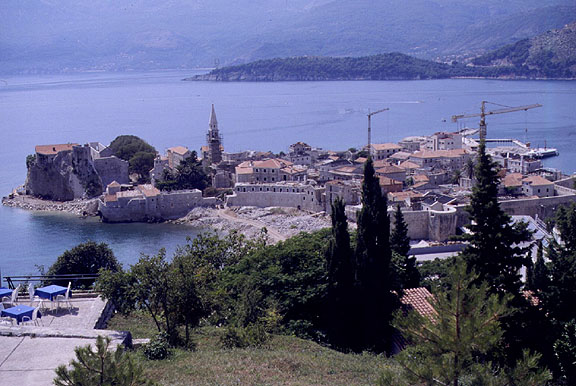
This natural harbour on the Adriatic coast in Montenegro was an important artistic and commercial centre with famous masonry and iconography schools in the Middle Ages. A large number of its monuments, among which four Romanesque churches and the town walls, were heavily damaged by an earthquake in 1979 but the town has been restored, mostly with UNESCO's help.
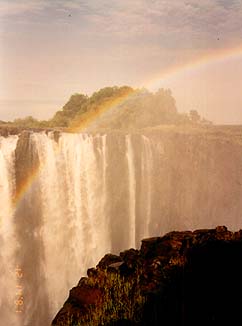
the falls
These are among the most spectacular waterfalls in the world. The Zambezi River, more than two kilometres wide at this point, plunges noisily down a series of basalt gorges and raises an iridescent mist that can be seen more than 20 kilometres away.
|
Kiev: Saint Sophia Cathedral and Related Monastic Buildings, the Kiev-Pechersk Lavra, |
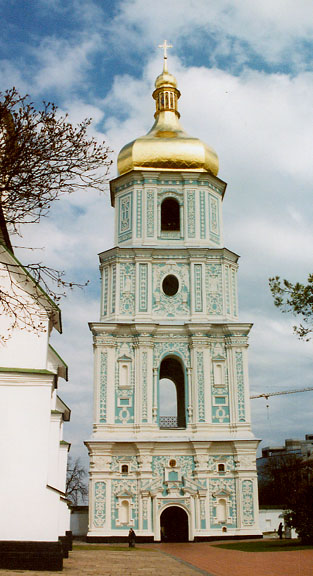
Bell tower of Saint Sophia cathedral in Kyiv
Designed to rival Hagia Sophia in Constantinople, Kiev's Saint-Sophia Cathedral symbolizes the 'new Constantinople', capital of the Christian principality of Kiev, which was created in the 11th century in a region evangelized after the baptism of St Vladimir in 988. The spiritual and intellectual influence of Kiev-Pechersk Lavra contributed to the spread of Orthodox thought and the Orthodox faith in the Russian world from the 17th to the 19th century.
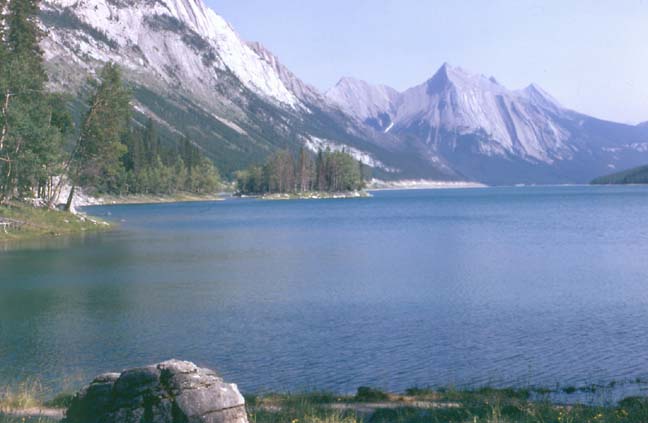
lakes and mountains of Alberta
The contiguous national parks of Banff, Jasper, Kootenay and Yoho, as well as the Mount Robson, Mount Assiniboine and Hamber provincial parks, studded with mountain peaks, glaciers, lakes, waterfalls, canyons and limestone caves, form a striking mountain landscape. The Burgess Shale fossil site, well known for its fossil remains of soft-bodied marine animals, is also found there.
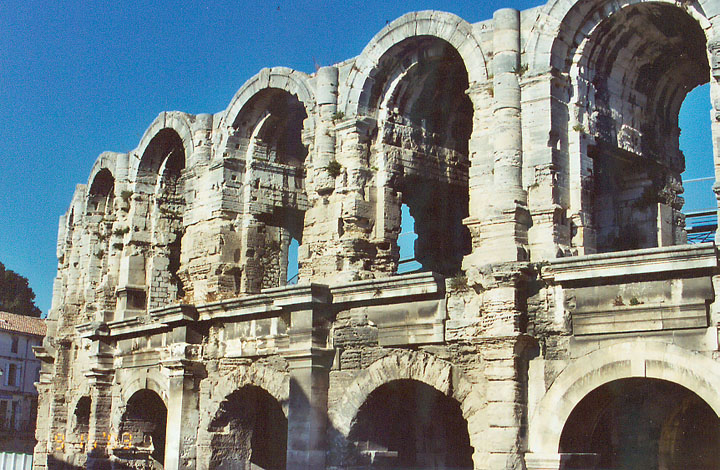
Arena in Arles
Arles is a good
example of the adaptation of an ancient city to medieval European civilization.
It has some impressive Roman monuments, of which the earliest – the arena, the
Roman theatre and the cryptoporticus (subterranean galleries) – date back to the
1st century B.C. During the 4th century Arles experienced a second golden age,
as attested by the baths of Constantine and the necropolis of Alyscamps. In the
11th and 12th centuries, Arles once again became one of the most attractive
cities in the Mediterranean. Within the city walls, Saint-Trophime, with its
cloister, is one of Provence's major Romanesque monuments.
Papal Palace in 1957
In the 14th century,
this city in the South of France was the seat of the papacy. The Palais des
Papes, an austere-looking fortress lavishly decorated by Simone Martini and
Matteo Giovanetti, dominates the city, the surrounding ramparts and the remains
of a 12th-century bridge over the Rhone. Beneath this outstanding example of
Gothic architecture, the Petit Palais and the Romanesque Cathedral of
Notre-Dame-des-Doms complete an exceptional group of monuments that testify to
the leading role played by Avignon in 14th-century Christian Europe.
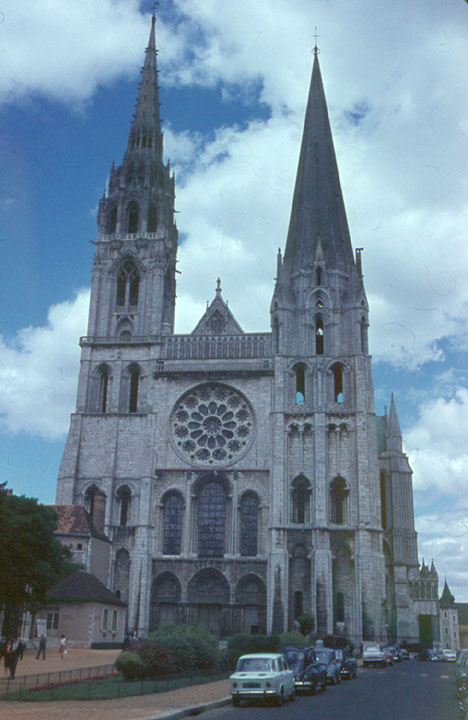
Chartres Cathedral
Partly built starting
in 1145, and then reconstructed over a 26-year period after the fire of 1194,
Chartres Cathedral marks the high point of French Gothic art. The vast nave, in
pure ogival style, the porches adorned with fine sculptures from the middle of
the 12th century, and the magnificent 12th- and 13th-century stained-glass
windows, all in remarkable condition, combine to make it a masterpiece.
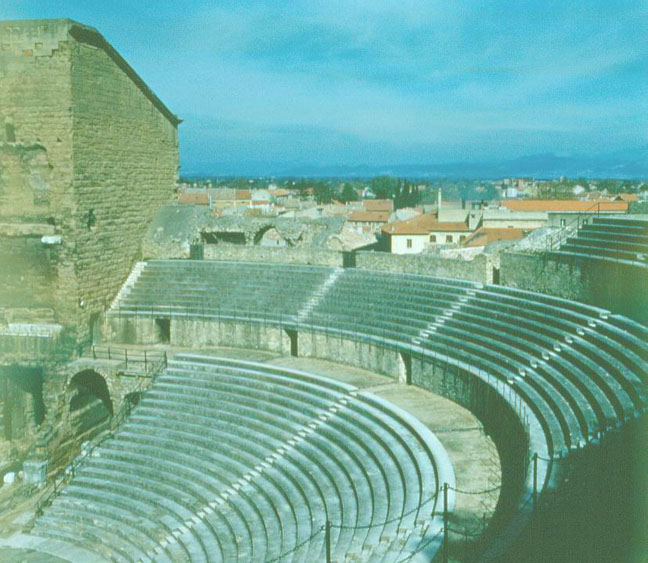
theatre of Orange in 1957
Situated in the Rhone valley, the ancient theatre of Orange, with its 103-m- long facade, is one of the best preserved of all the great Roman theatres. Built between A.D. 10 and 25, the Roman arch is one of the most beautiful and interesting surviving examples of a provincial triumphal arch from the reign of Augustus. It is decorated with low reliefs commemorating the establishment of the Pax Romana.
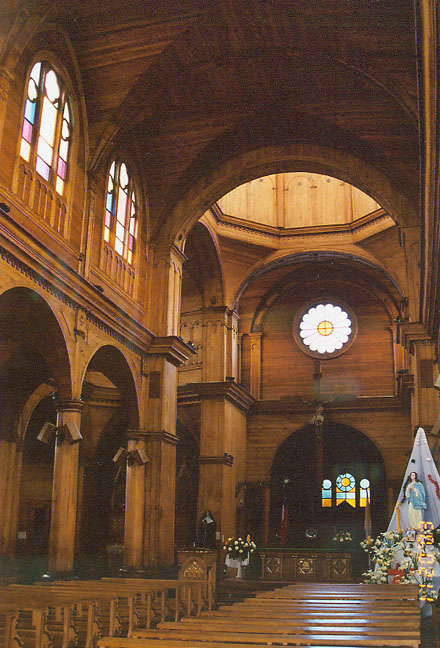
the cathedral in Castro City, Chiloè island
The Churches of Chiloé represent a unique example in Latin America of an outstanding form of ecclesiastical wooden architecture. They represent a tradition initiated by the Jesuit Peripatetic Mission in the 17th and 18th centuries, continued and enriched by the Franciscans during the 19th century and still prevailing today. These churches embody the intangible richness of the Chiloé Archipelago, and bear witness to a successful fusion of indigenous and European culture, the full integration of its architecture in the landscape and environment, as well as to the spiritual values of the communities.
|
|
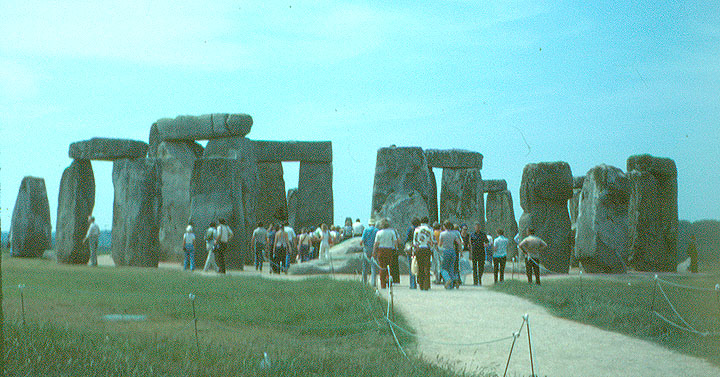
Stonehenge in 1976
Stonehenge and Avebury, in Wiltshire, are among the most famous groups of megaliths in the world. The two sanctuaries consist of circles of menhirs arranged in a pattern whose astronomical significance is still being explored. These holy places and the nearby Neolithic sites are an incomparable testimony to prehistoric times.
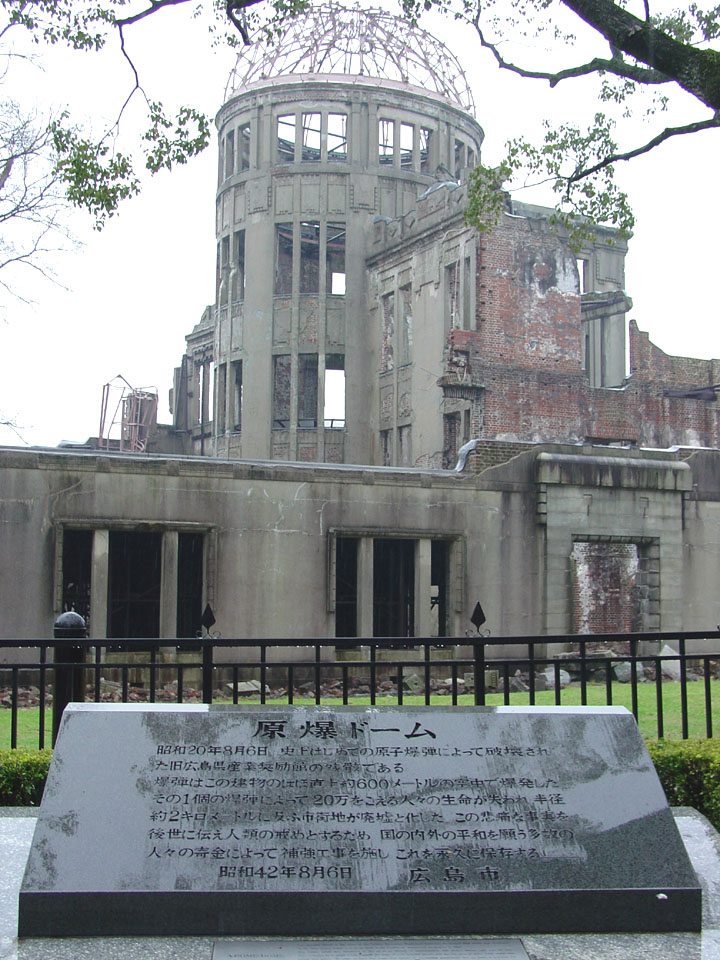
The Hiroshima Peace
Memorial (Genbaku Dome) was the only structure left standing in the area where
the first atomic bomb exploded on 6 August 1945. Through the efforts of many
people, including those of the city of Hiroshima, it has been preserved in the
same state as immediately after the bombing. Not only is it a stark and powerful
symbol of the most destructive force ever created by humankind; it also
expresses the hope for world peace and the ultimate elimination of all nuclear
weapons.
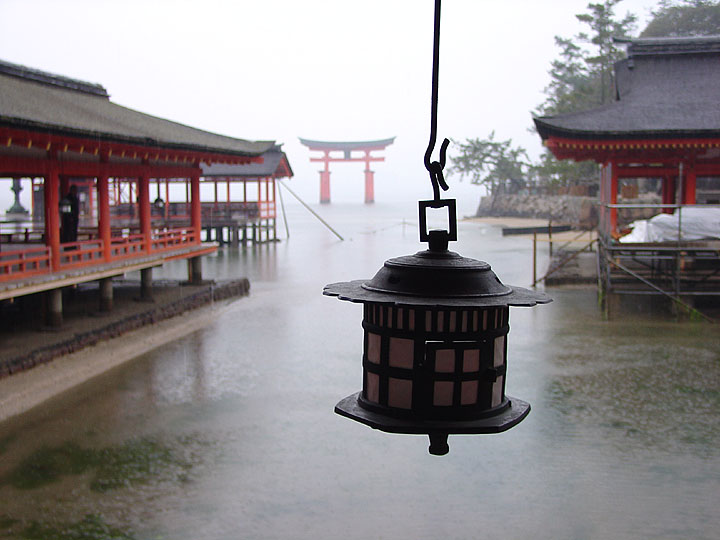
The island of Itsukushima, in the Seto inland sea, has been a holy place of Shintoism since the earliest times. The first shrine buildings here were probably erected in the 6th century. The present shrine dates from the 13th century and the harmoniously arranged buildings reveal great artistic and technical skill. The shrine plays on the contrasts in colour and form between mountains and sea and illustrates the Japanese concept of scenic beauty, which combines nature and human creativity.

the platform where the statue of Enver Hoxha had been
The historic town of
Gjirokastra, in the Drinos river valley in southern Albania, is a rare example
of a well-preserved Ottoman town, built by farmers of large estate. The
13th-century citadel provides the focal point of the town with its typical tower
houses (Turkish kule). Characteristic of the Balkan region, Gjirokastra contains
a series of outstanding examples of kule, a type of building which crystallized
in the 17th century. But Gjirokastra also features some more elaborate examples
from the early 19th century. The kule has a tall basement, a first floor for use
in the cold season, and a second floor for the warm season. Interiors feature
rich decorative details and painted floral patterns, particularly in the zones
reserved for the reception of visitors. The town also retains a bazaar, an
18th-century mosque and two churches of the same period.
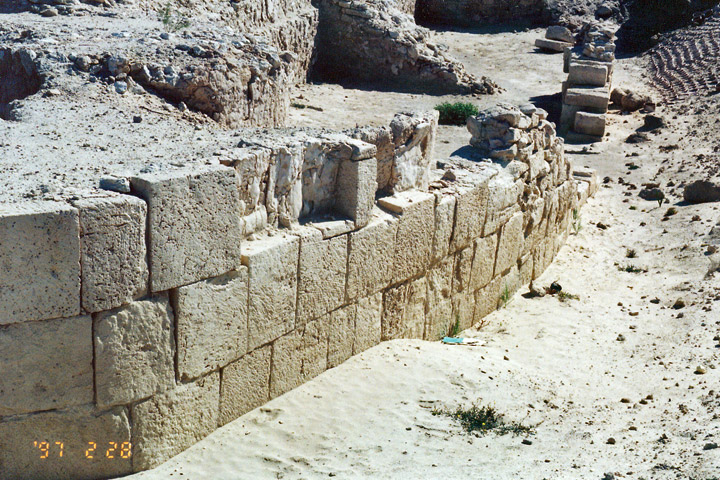
Barbar Temple
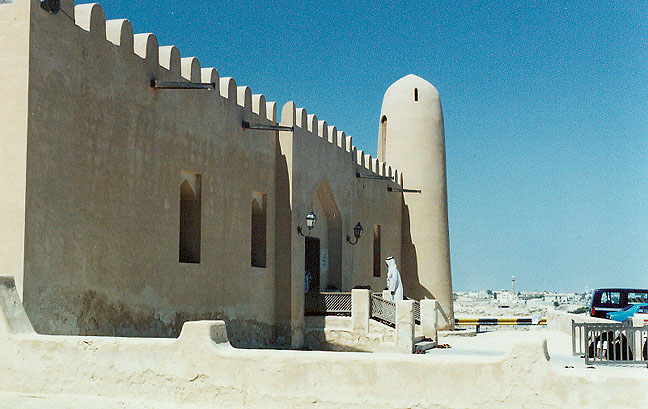
mosque at prayer time
Qal'at
al–Bahrain is a typical tell – an artificial mound created by many successive
layers of human occupation. The strata of the 300x600-metre tell testify to
continuous human presence from about 2300 B.C. to the 16th century A.D. About
25% of the site have been excavated revealing structures of different types:
residential, public, commercial, religious and military. They testify to the
importance of the site, a trading port, over the centuries. On the top of the
12m high mound there is the impressive Portuguese fort, which gave the whole
site its name, qal'a, meaning fort. The site was the capital of the Dilmun, one
of most important ancient civilizations of the region. It contains the richest
remains inventoried of this civilization, which was hitherto only known from
written Sumerian references.
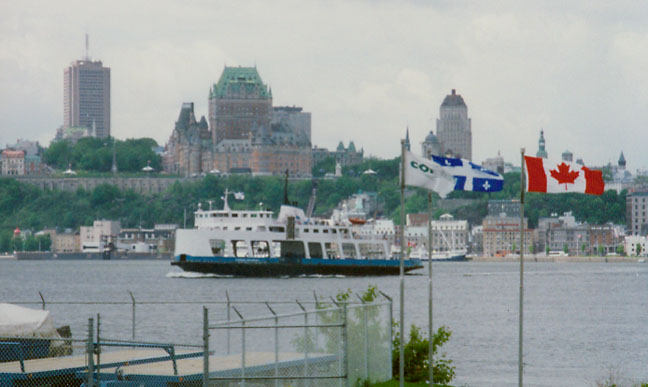
Quebec city
Québec was founded by the French explorer Champlain in the early 17th century. It is the only North American city to have preserved its ramparts, together with the numerous bastions, gates and defensive works which still surround Old Québec. The Upper Town, built on the cliff, has remained the religious and administrative centre, with its churches, convents and other monuments like the Dauphine Redoubt, the Citadel and Château Frontenac. Together with the Lower Town and its ancient districts, it forms an urban ensemble which is one of the best examples of a fortified colonial city.
![]()
As of 7/1/2010 I have visited and
taken photos of
301 of the 890 World Heritage Sites in 148 countries.
![]()
My Life List of World Heritage sites I have visited
![]()
Return to Favorite Experiences page
![]()